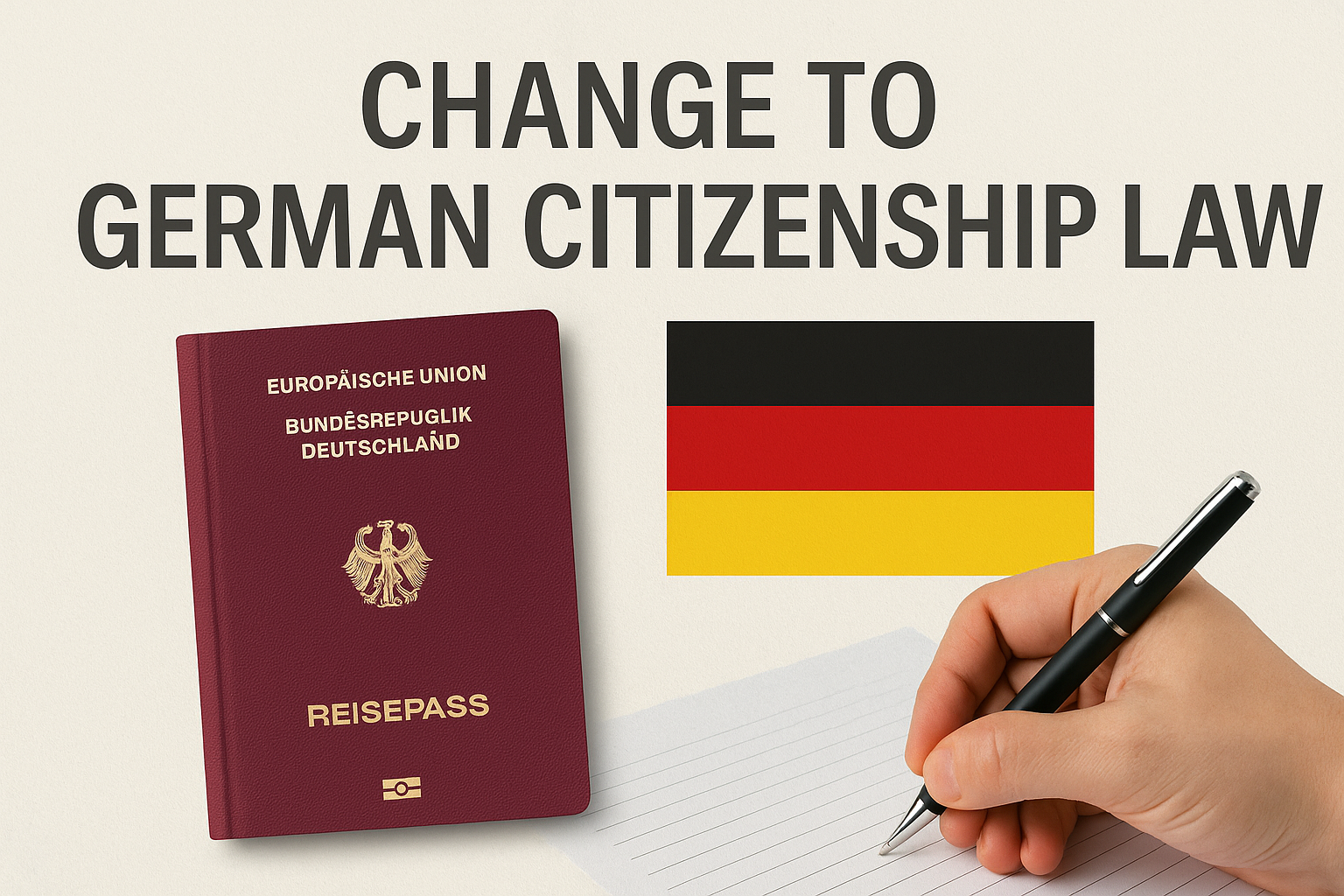- Home
- Information Hub
- Germany’s Public Transport
Moving to Germany is an exciting venture, but one of the most immediate and lasting impressions for newcomers, especially from countries like India, is the seamless efficiency of Germany’s public transportation system. Whether you’re dashing through cities or meandering through the countryside, Germany’s public transport system is nothing short of remarkable. It’s not just a network—it’s the pulse that keeps the country moving, connecting sprawling metropolises to quaint villages with an ease that’s hard to find elsewhere.
From the high-speed InterCity Express (ICE) trains to trams, U-Bahn, S-Bahn, and buses, Germany offers a variety of options that make it one of the most accessible countries in Europe for getting around. For those new to the system, this comprehensive guide will help you navigate Germany’s world-class public transport with confidence.
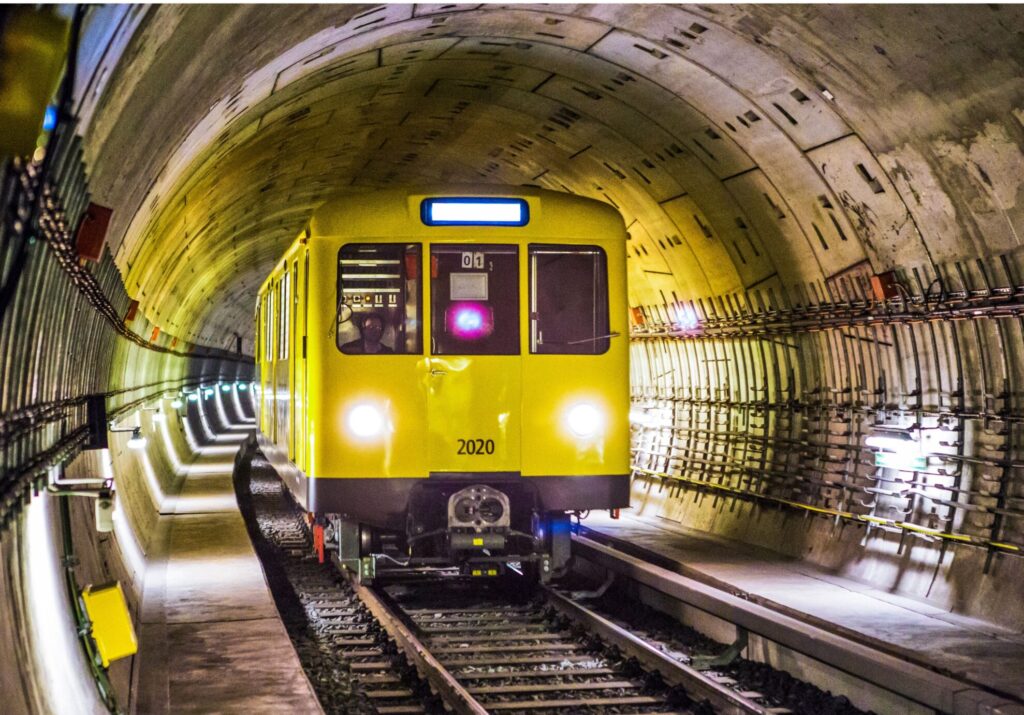
Efficiency and Integration: The Backbone of German Transport
Germany’s public transport is built on precision. One of the standout features of the system is its integration and accessibility. Whether you’re traveling by train, tram, or bus, the transition between modes of transport is fluid and designed to be hassle-free.
For those coming from less organized or more chaotic transport systems, the sheer efficiency can be a revelation. A single ticket often covers various forms of transport, making travel simple and seamless. You’ll find that getting from one point to another—even if it involves switching from a train to a bus or tram—is surprisingly easy.
Germany’s public transport is also highly sustainable, with a strong emphasis on reducing traffic congestion and minimizing environmental impact. The government continues to invest in electric and hybrid buses, and plans are underway to further modernize rail infrastructure to keep up with increasing demand. However, ticket prices are expected to rise starting next year to accommodate rising operational costs and inflation. Although specific percentages haven’t been officially confirmed, sources suggest a modest increase in prices across different ticket categories.
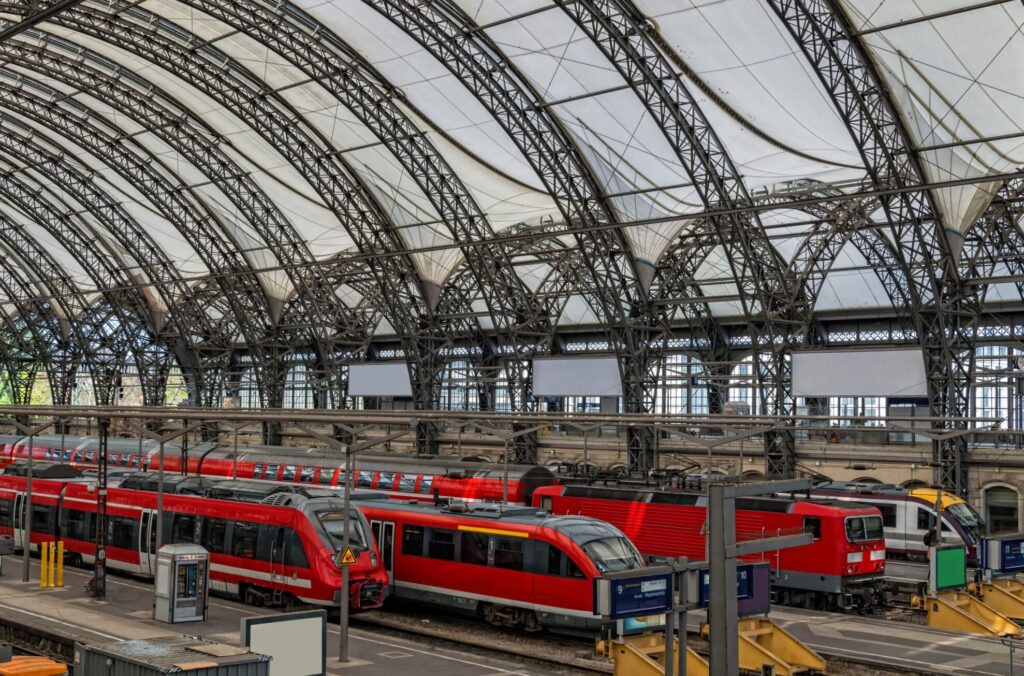
InterCity Express (ICE): Speed and Comfort Across the Country
For long-distance travel within Germany, the InterCity Express (ICE) trains are a marvel. The ICE trains are Germany’s flagship service, offering passengers a fast, comfortable, and punctual way to travel between cities. They can reach speeds of up to 300 km/h (186 mph), which means that major cities like Berlin, Munich, Frankfurt, and Hamburg are just a few hours apart.
What’s more, ICE trains are well-equipped with modern amenities. You’ll find Wi-Fi, power outlets, spacious seating, and dining cars that offer a selection of food and drinks. For business travelers or those who prefer extra comfort, first-class options are also available, with additional perks like quieter cabins and more spacious seating.
Given the efficiency and speed, many travelers find ICE trains to be a viable alternative to domestic flights. The convenience of traveling from city center to city center—without the need for airport security checks—makes the ICE a popular choice for both locals and tourists.

Regional Trains and Local Transport: Comprehensive and Convenient
Germany’s public transport network is not limited to the ICE trains. RegionalExpress (RE) and RegionalBahn (RB) trains provide reliable connections between smaller towns and larger cities. These trains are perfect for exploring Germany’s picturesque countryside or reaching more remote destinations.
Within cities, the U-Bahn (underground metro) and S-Bahn (suburban trains) offer comprehensive services, often complemented by trams and buses. The S-Bahn is especially useful for reaching the outskirts of cities, while the U-Bahn efficiently covers urban areas. In cities like Berlin, Munich, and Hamburg, you’ll find these systems well-integrated, making it easy to hop from one mode of transport to another without much wait time.
For those who prefer a more scenic or laid-back experience, trams offer a slower but charming way to navigate through cities and towns. Cities like Dresden and Leipzig are renowned for their efficient tram networks, which connect both bustling centers and quieter suburbs.
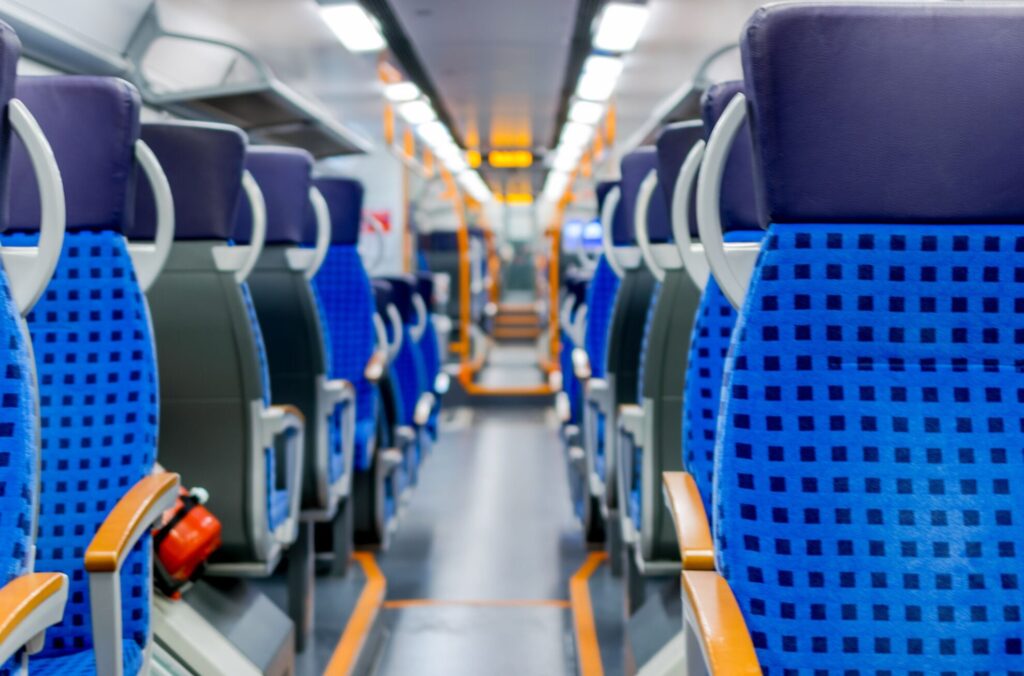
Environmental and Economic Benefits of Public Transport
Germany’s emphasis on environmental sustainability is evident in its public transportation system. By encouraging the use of public transport over private vehicles, the country has reduced traffic congestion and greenhouse gas emissions. The government is also investing in greener options, such as electric buses and plans to electrify more of the country’s rail network.
Economically, Germany’s public transport remains a highly cost-effective alternative to owning a car, especially in densely populated urban areas where parking is limited and often expensive. Many cities continue to offer monthly and annual passes that allow unlimited travel within designated zones—often at a fraction of the cost of fuel, insurance, and maintenance.
A major milestone has been the introduction of the Deutschlandticket (€58/month) in 2025, which allows unlimited regional travel across all of Germany’s local and regional transport networks (excluding high-speed ICE and IC trains). This flat-rate model has significantly boosted public transport accessibility for commuters, students, and frequent travelers. However, due to increased operating and infrastructure costs, transport authorities have indicated that fare adjustments may be introduced in the near future, possibly raising the monthly ticket price above €58 in 2026.
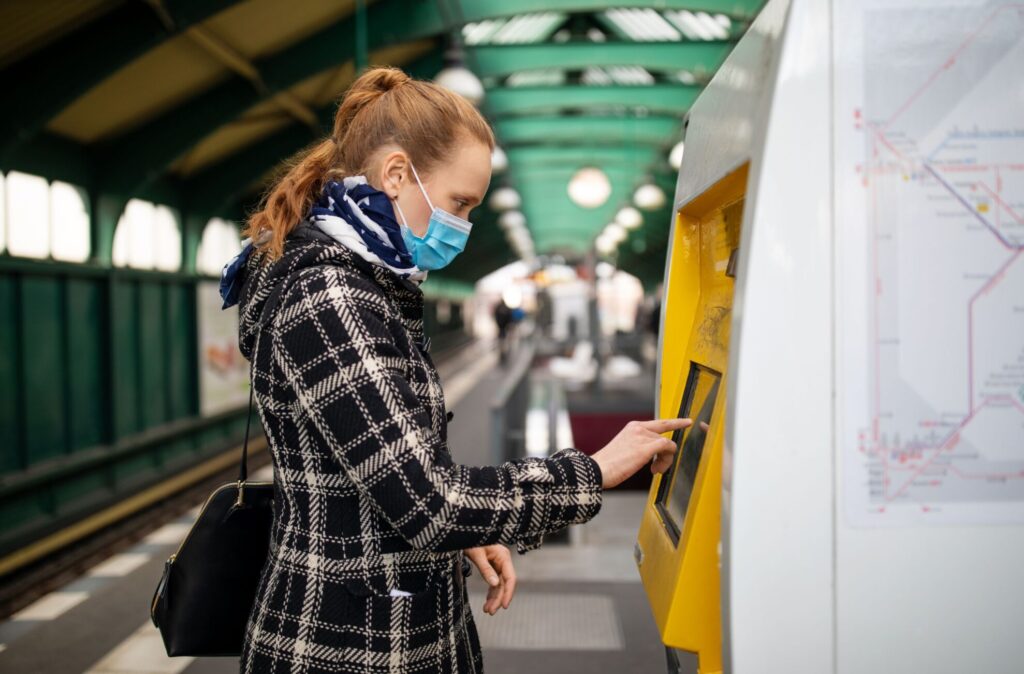
Moving to Germany is an exciting venture, but one of the most immediate and lasting impressions for newcomers, especially from countries like India, is the seamless efficiency of Germany’s public transportation system. Whether you’re dashing through cities or meandering through the countryside, Germany’s public transport system is nothing short of remarkable. It’s not just a network—it’s the pulse that keeps the country moving, connecting sprawling metropolises to quaint villages with an ease that’s hard to find elsewhere.
From the high-speed InterCity Express (ICE) trains to trams, U-Bahn, S-Bahn, and buses, Germany offers a variety of options that make it one of the most accessible countries in Europe for getting around. For those new to the system, this comprehensive guide will help you navigate Germany’s world-class public transport with confidence.
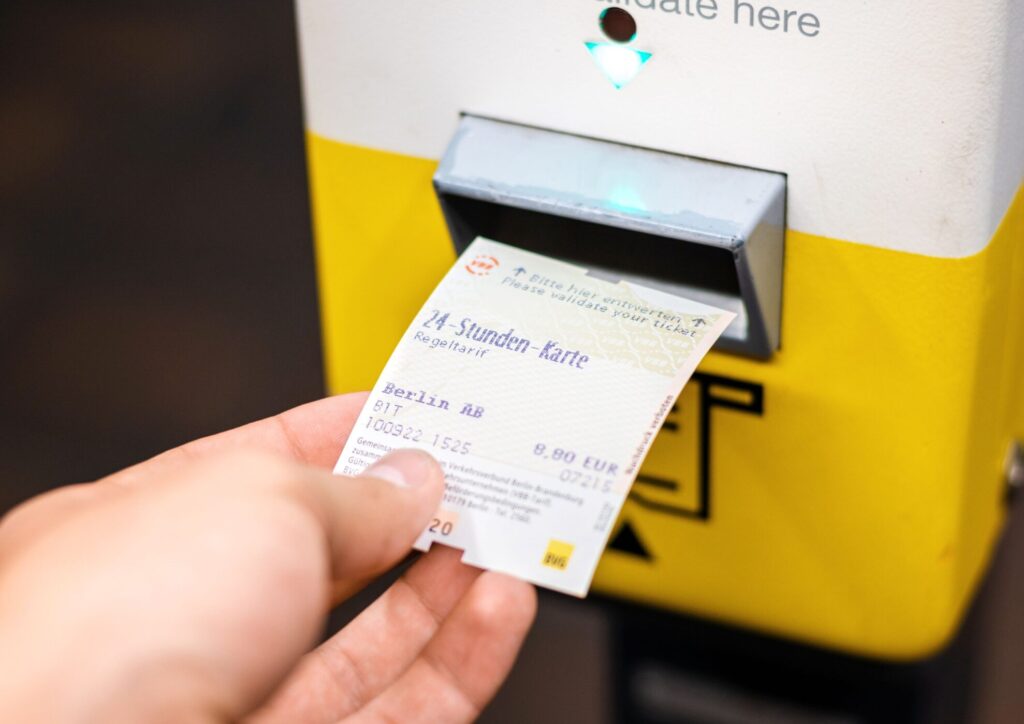
Efficiency and Integration: The Backbone of German Transport
Germany’s public transport is built on precision. One of the standout features of the system is its integration and accessibility. Whether you’re traveling by train, tram, or bus, the transition between modes of transport is fluid and designed to be hassle-free.
For those coming from less organized or more chaotic transport systems, the sheer efficiency can be a revelation. A single ticket often covers various forms of transport, making travel simple and seamless. You’ll find that getting from one point to another—even if it involves switching from a train to a bus or tram—is surprisingly easy.
Germany’s public transport is also highly sustainable, with a strong emphasis on reducing traffic congestion and minimizing environmental impact. The government continues to invest in electric and hybrid buses, and plans are underway to further modernize rail infrastructure to keep up with increasing demand. However, ticket prices are expected to rise starting next year to accommodate rising operational costs and inflation. Although specific percentages haven’t been officially confirmed, sources suggest a modest increase in prices across different ticket categories.
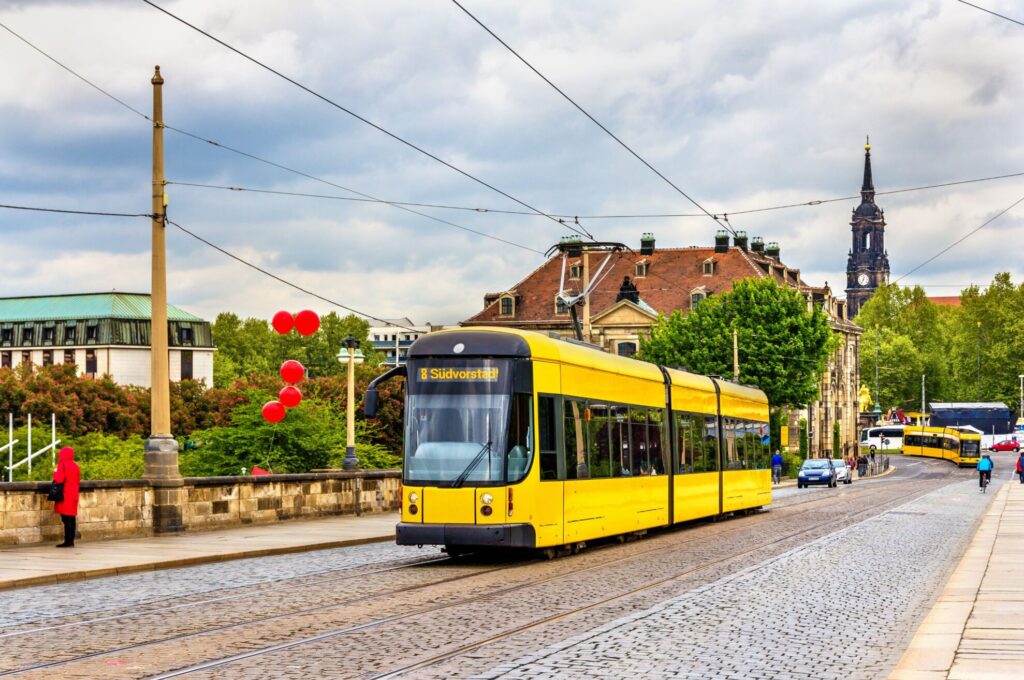
InterCity Express (ICE): Speed and Comfort Across the Country
For long-distance travel within Germany, the InterCity Express (ICE) trains are a marvel. The ICE trains are Germany’s flagship service, offering passengers a fast, comfortable, and punctual way to travel between cities. They can reach speeds of up to 300 km/h (186 mph), which means that major cities like Berlin, Munich, Frankfurt, and Hamburg are just a few hours apart.
What’s more, ICE trains are well-equipped with modern amenities. You’ll find Wi-Fi, power outlets, spacious seating, and dining cars that offer a selection of food and drinks. For business travelers or those who prefer extra comfort, first-class options are also available, with additional perks like quieter cabins and more spacious seating.
Given the efficiency and speed, many travelers find ICE trains to be a viable alternative to domestic flights. The convenience of traveling from city center to city center—without the need for airport security checks—makes the ICE a popular choice for both locals and tourists.
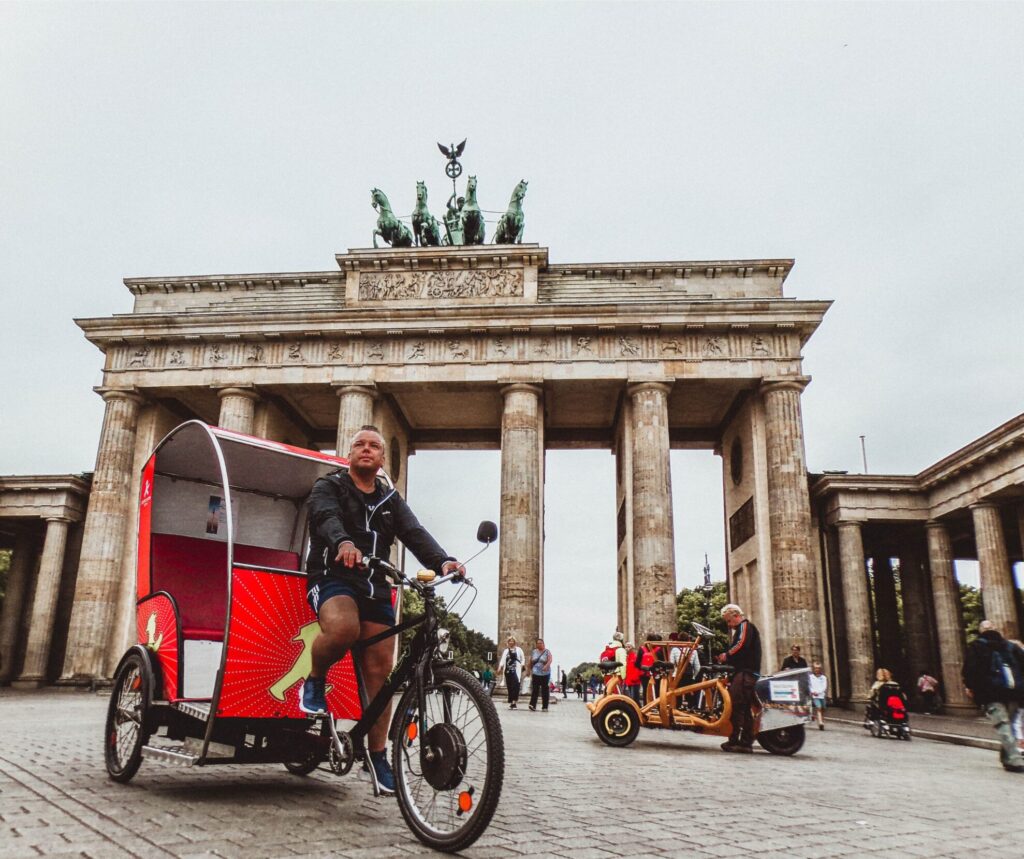
Regional Trains and Local Transport: Comprehensive and Convenient
Germany’s public transport network is not limited to the ICE trains. RegionalExpress (RE) and RegionalBahn (RB) trains provide reliable connections between smaller towns and larger cities. These trains are perfect for exploring Germany’s picturesque countryside or reaching more remote destinations.
Within cities, the U-Bahn (underground metro) and S-Bahn (suburban trains) offer comprehensive services, often complemented by trams and buses. The S-Bahn is especially useful for reaching the outskirts of cities, while the U-Bahn efficiently covers urban areas. In cities like Berlin, Munich, and Hamburg, you’ll find these systems well-integrated, making it easy to hop from one mode of transport to another without much wait time.
For those who prefer a more scenic or laid-back experience, trams offer a slower but charming way to navigate through cities and towns. Cities like Dresden and Leipzig are renowned for their efficient tram networks, which connect both bustling centers and quieter suburbs.
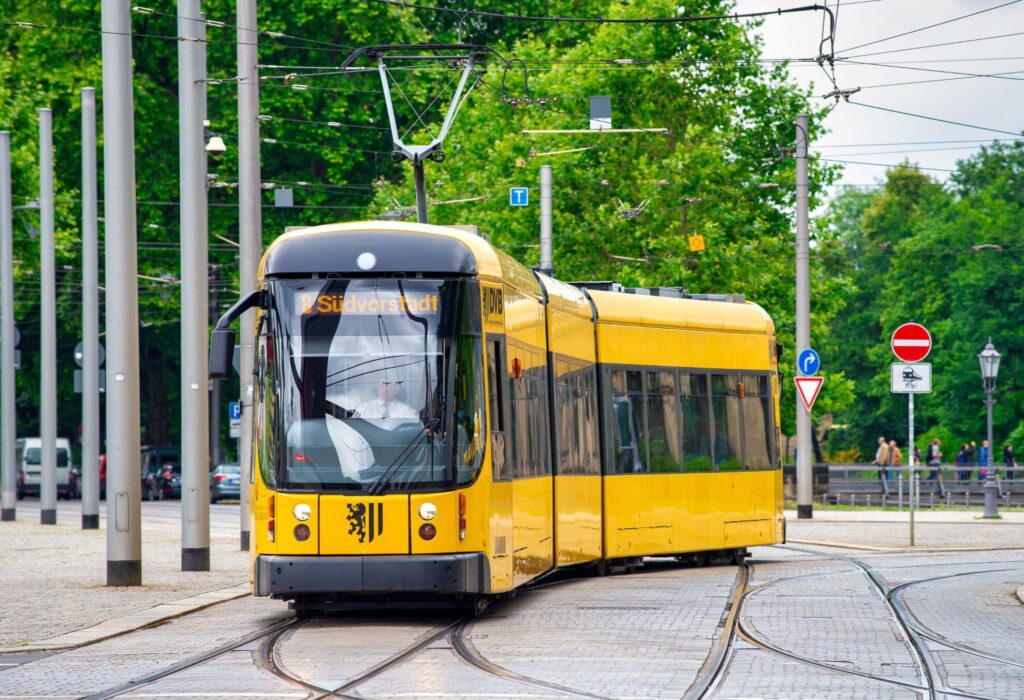
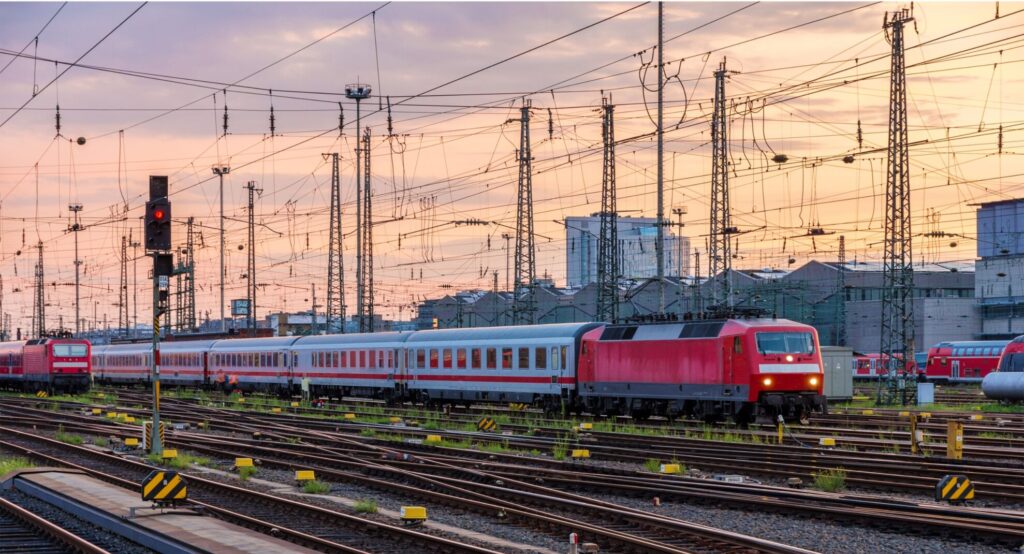
Environmental and Economic Benefits of Public Transport in Germany (2025 Update)
Germany’s commitment to sustainable mobility continues to evolve in 2025, with public transportation playing a central role in reducing emissions and promoting climate-conscious travel. Government investments are expanding the use of electric and hydrogen-powered buses, advancing rail network electrification, and supporting cycling infrastructure that integrates with public transit systems. These efforts are designed to make cities greener, less congested, and more accessible for residents and visitors alike.
Economic Benefits: A Cost-Effective Alternative to Car Ownership
For many residents—especially in urban centers—public transport remains a smart financial choice. With rising costs for fuel, car insurance, and parking, public transit offers a more affordable, convenient alternative. Monthly and annual travel passes make commuting both economical and predictable, helping households save significantly over time.
Deutschlandticket 2025: Unlimited Travel, Stable for Now
The Deutschlandticket, currently priced at €58 per month, continues to offer unlimited travel on all local and regional public transport across Germany. It has become a go-to option for commuters, students, and frequent travelers since its launch in 2023.
However, fare adjustments are expected in the coming year, as transport authorities cite increasing operational costs and funding pressures. While public transport still remains significantly cheaper than owning and maintaining a private vehicle, travelers are advised to stay informed through official sources regarding potential fare changes.
The Rural Reality: Where Public Transport Falls Short
Despite the robust urban transport systems, rural areas can sometimes present a different picture. My own move to a small village highlighted the limitations of public transport in less populated regions. In contrast to the frequent services found in cities, buses and trains in rural areas may run less frequently, and the coverage can be limited. This makes daily commuting a challenge for those relying solely on public transport, and in many cases, owning a car becomes a necessity. For those accustomed to bustling urban systems, this may come as a surprise, but it’s an important aspect to consider for anyone planning to live in Germany’s rural heartlands.
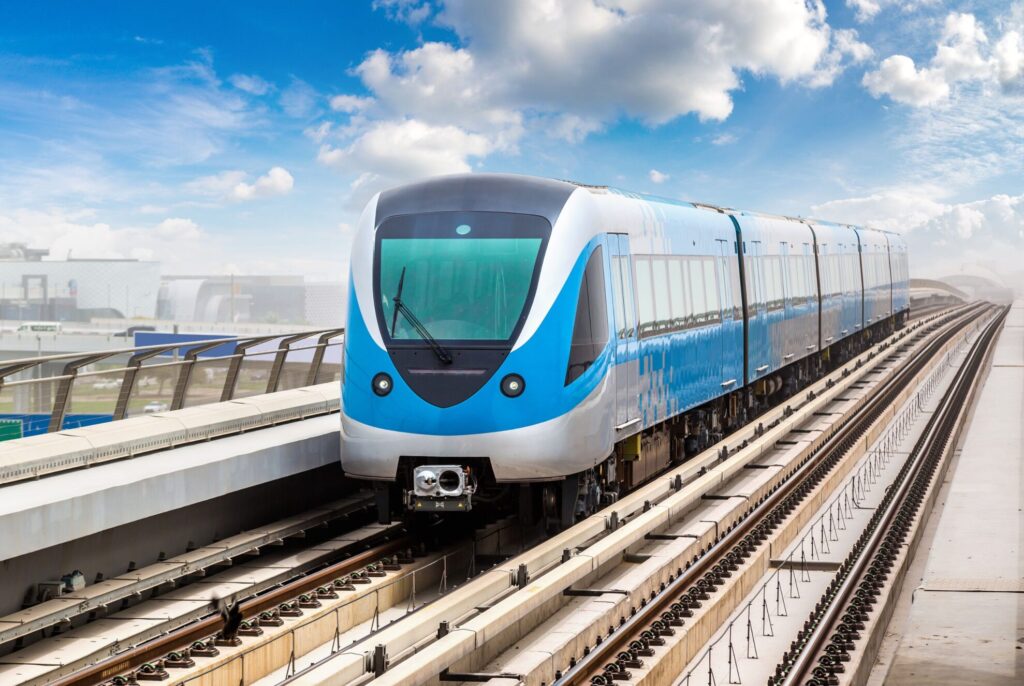
Students and Young Professionals: Affordable and Accessible
Germany is a haven for students, and public transport plays a significant role in supporting the student lifestyle. Many universities offer a semester ticket included in tuition fees, allowing students unlimited travel within certain regions. This is not only a great way to commute but also an incentive to explore different parts of the country during weekends and holidays.
For young professionals, monthly and annual passes are available at discounted rates, making daily commutes both affordable and convenient. Additionally, Germany’s public transport system helps young professionals avoid the costs and hassles of car ownership, especially in cities where public transport is faster and more convenient.
Practical Tips for Navigating German Public Transport
For newcomers, understanding and adapting to Germany’s public transport system can make a world of difference. Here are a few tips to help you navigate with ease:
- Understand the Ticketing System: Germany’s ticketing options can be confusing at first, with different prices for short trips, day passes, and monthly tickets. Take the time to familiarize yourself with the options available in your region to find the most cost-effective solution.
- Use Apps for Real-Time Information: Apps like DB Navigator and BVG FahrInfo are indispensable for travelers, offering real-time updates on train and bus schedules, routes, and potential delays. These apps are available in multiple languages and make navigating the system a breeze.
- Consider Bike-Friendly Options: Germany is very bike-friendly, with dedicated lanes and rental services available in most cities. Combining cycling with public transport is not only efficient but also a great way to explore cities like a local.
- Plan for Rural Living: If you’re moving to or visiting a rural area, it’s important to check the availability of public transport. In some areas, especially in the countryside, owning a car may be the best option for flexibility and convenience.
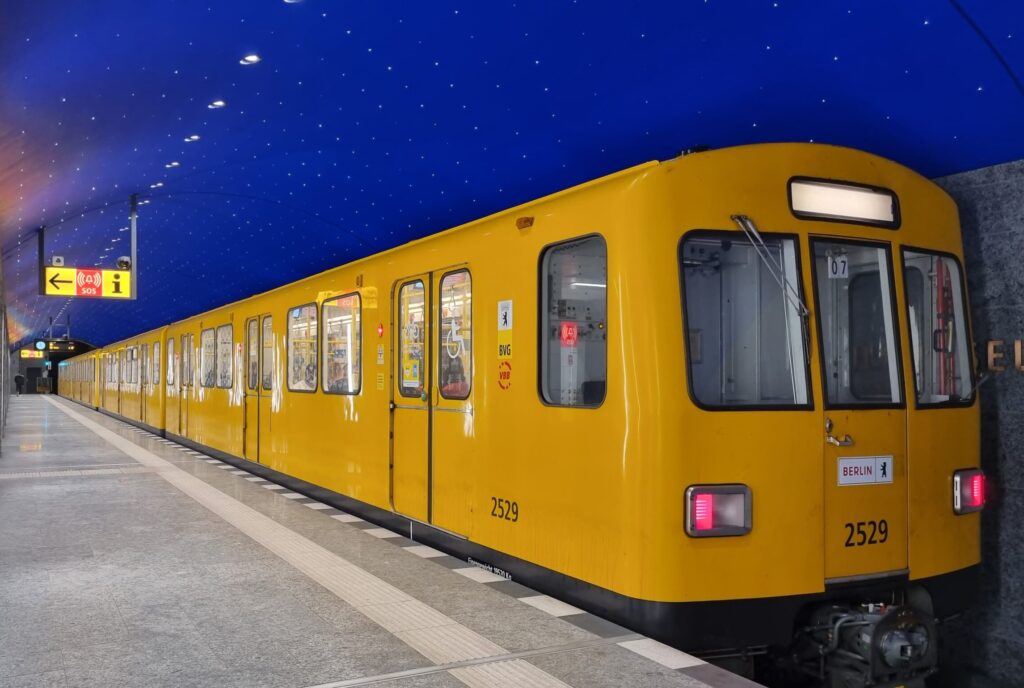
Final Thought: Travel Smart, Live Sustainably
Germany’s public transport system stands as a benchmark of efficiency, sustainability, and accessibility. For those new to the country—especially from regions where public transportation may not be as dependable—it offers a refreshing alternative to car dependency. Whether you’re gliding through the countryside on an ICE train or catching a local tram, the experience is thoughtfully designed for ease, comfort, and environmental responsibility.
Embracing public transport in Germany isn’t just practical—it’s a conscious lifestyle choice that reflects shared values of community living and sustainable mobility.
For accurate planning and smooth travel, always refer to trusted sources like Deutsche Bahn (www.bahn.com), the Public Transport Association (VDV), or your local transit authority for real-time updates. This article offers general insights and is not a substitute for official travel or transportation advice.
Deutsche Bahn (DB): https://www.bahn.com
Germany’s Public Transport Association (VDV): https://www.vdv.de
Local Transport Networks (e.g., BVG, RMV, MVV, SSB, VVS)



